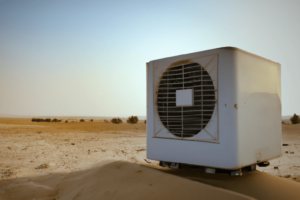How Much Does AC Install Cost?
Assuming you need a central air conditioning unit installed in your home, the average cost will be around $3,670. This price includes the unit itself and labor costs associated with installation. However, a few factors can affect the total cost of your AC installation. For example, the size of your home will impact how much work is required to properly install the unit. Additionally, the climate in your area can play a role in the overall cost. Suppose you live in an area with extreme temperatures. In that case, your AC unit will likely need to be more powerful (and therefore more expensive) than if you live in a milder climate.
The bottom line is that the cost of AC installation can vary depending on several factors. However, you can expect to pay around $3,670 for a central air conditioning unit installed by a professional. Cost of cooling in your area
The cost of air conditioning will depend on the price of electricity in your area. For example, live in a region heavily dependent on coal energy production. Your energy bills will be higher than those who use more expensive energy sources.
As hot weather starts to hit, many homeowners dread the thought of their energy bills rising along with the temperature. One way to ease this pain is to install a new air conditioning unit, which can lead to big savings on your monthly statement. But how much does AC installation cost? Read on for all the details.
AC Unit Prices: The Basics
Air conditioners have come a long way in recent years, becoming more efficient and easier to maintain. But with all the different makes and models on the market, how do you know which one is right for your home? The first step is understanding the basics of AC units and what factors affect their price.
There are two main types of air conditioners: central AC units and window AC units. Central AC units are installed in your home’s ductwork and work with your furnace to cool your entire house. Window AC units are smaller and can be installed in a single window or door.
The size of the unit is one of the most important factors affecting price. A unit that’s too small won’t be able to effectively cool your home. At the same time, a unit that’s too large will use more energy than necessary.
The first thing you need to know about AC installation costs is that there is no one-size-fits-all answer. The price of your new unit will depend on various factors, including the type of system you choose and the size of your home.
That said, here are some basic guidelines to help you get started:
- Central air conditioners typically range from $3,000-$5,000
- Window units generally cost between $150-$500
- Mini-splits can vary widely in price depending on factors like installation and BTU rating but tend to fall in the $2,000-$5,000 range
Factors That Affect AC Installation Costs
In addition to the type and size of your chosen unit, several other factors can impact AC install costs. These include:
The age and condition of your ductwork: If your ducts are old or damaged, they will need to be replaced or repaired before your new AC unit can be installed. This can add several hundred dollars – or even a few thousand – to the overall cost of your project.
Whether or not you need a permit: Most jurisdictions require permits for major HVAC work, including air conditioner installation. The permit cost will usually be rolled into your total project bill.
The complexity of the job: An easy installation with minimal ductwork changes will obviously cost less than a more complex job requiring significant alterations (or none at all).
Discounts and rebates: Many utility companies offer rebates for customers who install energy-efficient air conditioners. Check with yours to see if any money-saving programs are currently available in your area.
How Does an Air Conditioner Work
In simple terms: an air conditioner transfers heat from the interior of your home to the outdoors, making the inside comfortable.
Let’s break that down a bit. At the heart of any air conditioner is a heat exchanger device. This looks like a box of long metal tubes, often coiled in a circle. When you turn on the AC, the fan inside the coil sucks in air from your home, which flows over the coils. Refrigerant runs through the coils.
Refrigerant is a special liquid or gas that can transfer heat from one location and dump it elsewhere. Have (Ever messed with dry ice as a kid and watched how your breath would condense when you blew on it? That’s refrigerant.)
Science with dry ice and an ac unit
When the refrigerant runs through the coils, it takes the heat from inside and dumps it outside. The refrigerant then evaporates, creating a nice, steady breeze that flows back into your home through the vents. This cool air drops the temperature of your house, making you comfortable. Meanwhile, the refrigerant travels through the coils a second time, where it condenses and makes the journey all over again.
After all, your air conditioner isn’t making cold air — it’s just moving hot air out and allowing the cool air around your home to come in. So if your home is t getting cool, you will have to deal with the fact that your air conditioner is failing, and it’s time for a replacement.
Frosting an ac unit
It’s hot out, and your air conditioner is on the fritz. The last thing you want to do is add more work to your plate by frosting your AC unit, but it’s a necessary evil if you want to keep your home cool and comfortable. Here’s a step-by-step guide to help you get the job done:
- Turn off the power to your AC unit at the breaker box. This is a critical step because you don’t want to be working with live wires.
- Remove the fan cover from the AC unit. This will give you access to the coils inside.
- Use a brush or vacuum attachment to remove any dirt or debris from the coils. This will help improve airflow and prevent frosting.
- Inspect the coils for any damage and ensure they’re clean before continuing.
One final thing to note — you’ve probably seen frosting on the air conditioner outside your house on hot summer days. That’s from the air conditioner pulling all the moisture out of the air. The moisture condenses and freezes on the coil outside. That happens when the air inside isn’t cold enough. The good news is that it happens to everyone — it’s not a sign that your air conditioner is broken.
Will Letting Your HVAC Run All Day Raise My Electricity Bill?
Of course, Running your ac all day will increase your electricity bill. The price of electricity has gone up over the last few years, so running an air conditioner for a long period might cost more. Still, the reality is that if it’s running, it’s costing you something. Whether that cost is worth it depends on the situation. If you’re a renter and the ac is already broken, you might as well run your ac all day. You are t be able to get your landlord to fix it for free.
8 Tips to Maintain Your Home’s Heating and Cooling System
- Change filters regularly:
In many homes, air filters are behind heat registers — the grates that sit underneath vents. To access, remove the register screws and pull the register forward. Dusty filters typically should be changed about every three months, but check the slim box to see if yours is filter-free.
- Have an HVAC system checkup:
Hire an HVAC professional to give your furnace, air-conditioning unit, or heat pump a complete checkup before the weather turns hot or cold.
- Don’t change your air filter unless you see dirt or dust particles:
Many filters available today are high-efficiency particulate air (HEPA) filters with very narrow pore size, allowing very few particles through, thus creating good indoor air quality.
- Know what kind of a filter separates good winter air from bad:
The MERV scale reflects how efficient a filter is. The minimum efficiency reporting value for residential filters is typically about three on the MERV scale.
- Don’t block your ducts:
Air ducts are designed to channel air to your home from your furnace. So anything that blocks the flow within an air duct — drapes, furniture, toys, you name it — can impair efficiency.
- Keep air registers and heat ducts clear:
For example, don’t pile clothes or books on top of heat registers, which span about 12 square inches.
- Have registers in each room:
If a room in your home is getting no heat, a register may be missing — or blocked. Check the ground to see if any ducts are coming into the room or the ceiling. Take a peek in the crawlspace and inspect the ductwork.
- Reseal central air vents:
If your central heat or air-conditioning system distributes air through ductwork, you may have leaky ducts. Avoiding this problem probably makes a good case for sealing the ductwork during new construction.
As the weather gets warmer, many people start considering installing air conditioning in their homes. Air conditioning can be a great way to stay cool and comfortable during the hot summer months. There are a few things to remember when choosing an air conditioning system for your home. First, you need to decide what type of system you want. There are two basic types of air conditioning systems: central air conditioners and window units. Central air conditioners are usually more expensive than window units. Still, they are also more powerful and can cool your entire home.
Air Conditioning Install in Conclusion
As you can see, many steps are involved in installing an air conditioner. While it may seem daunting, it is quite simple if you take the time to read the instructions and follow them carefully. With a little bit of patience and attention to detail, anyone can install an air conditioner. Give us a call at 561-777-9888










Leave a Reply
Your email is safe with us.